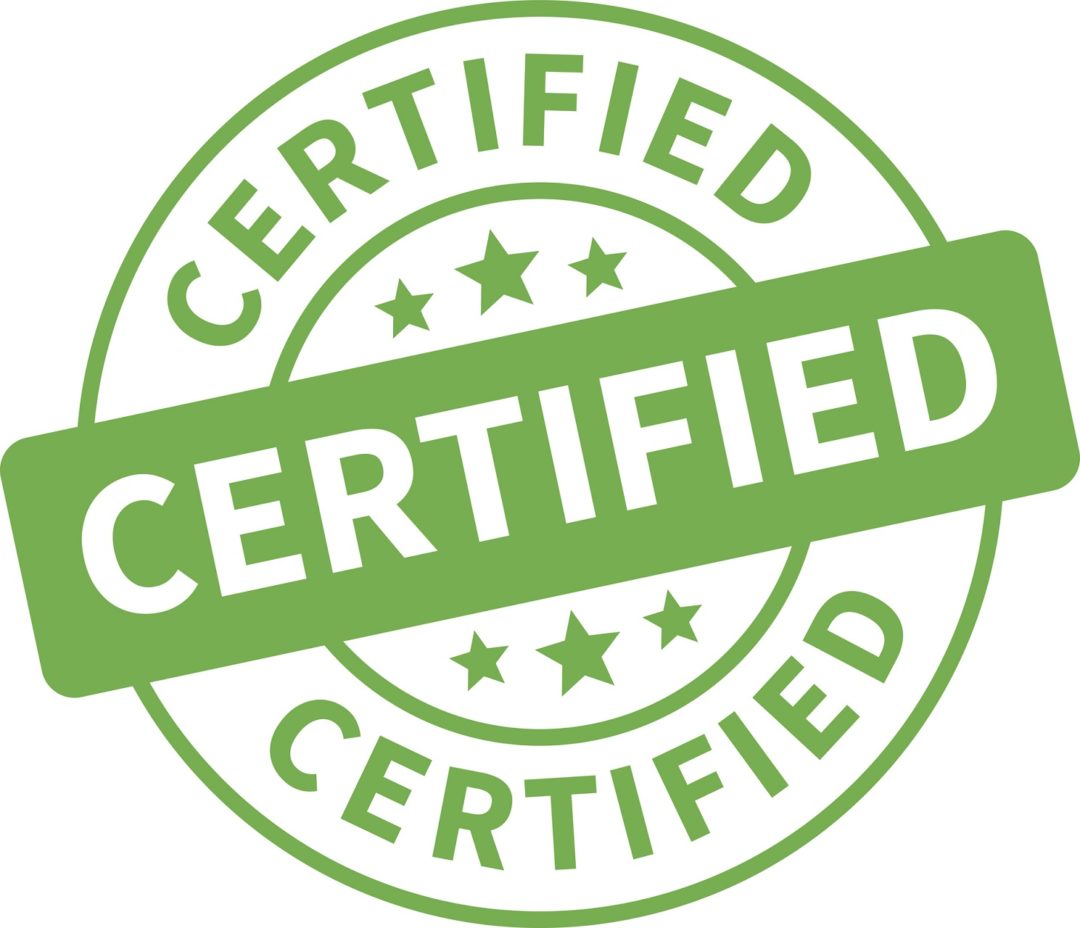Types of CertificationsOrganic.This is a certification regulated by USDA and products have to undergo testing to be classified as 100% organic. Accredited USDA certifying agents are sent to the farm or facility manufacturing the product to verify it meet criteria outlined by the Secretary of Agriculture. Agents make sure no synthetic chemicals or pesticides are used in any part of the growing, processing, or packaging process. Soil used to grow crops must be free of fertilizers containing synthetic ingredients such as nitrogen, phosphorus, lime or potash. Natural poisons like arsenic are also prohibited under organic standards. USDA organic also covers what can and cannot be fed to livestock. Growth hormones, antibiotics and other medications are tested for and prohibited. During processing, synthetic ingredients like sulfites, nitrates, nitrites and non-organic ingredients may not be used. For packaging, there can be no fungicides, preservatives or fumigants used nor can there be a history of the packaging coming into contact with non-organic substances that would compromise the organic quality of the product.
Farms and factories are tested on an annual basis to be able to maintain their organic status (3). Organic finished products can be 100% organic, organic with at least 95% organic ingredients, or “made with organic ingredients,” which is about 70% organic (1). Farms that are not organic also have the opportunity to transition to organic. That is why QAI, Inc. launched a “Certified Transitional” seal, so that companies moving toward organics can command a premium and sustain the cost of the transition over the required three years it takes to make the switch. USDA in partnership with the Organic Trade Association will also oversee approved Accredited Organic Certifying Agents with the National Certified Transitional Program.
Non-GMO.GMO stands for “genetically modified organism” or organisms that have been manipulated or created in a lab environment. Products most at-risk of being genetically modified include corn, soybeans and canola. The most prolific GMO is probably Roundup-ready corn from the agrochemical company Monsanto. GMOs fly in the face of organic because they are genetically engineered to be resistant to the herbicide glyphosate, brand name Roundup, encouraging the use of herbicides and pesticides. There is also much debate on the safety of GMOs in the food supply and critics believe consumption of GMOs will result in long term health problems. There is also the issue of cross contamination of plants that are not GMO and the lack of biodiversity in the food supply. GMOs are banned in a host of different countries, particularly in Europe. If a product is labeled organic it is intrinsically non-GMO. For a product to be labeled non-GMO, each ingredient used has to be verified as such first. More and more companies are going through Non-GMO Project for their verification needs. By Non-GMO Project standards, to get the label the product must be below the action threshold of 9% (4). However, it should be noted that a Non-GMO Project Verified product is not by virtue organic, and ingredients may still have been grown with the use of pesticides and herbicides.
Gluten Free.Gluten is a substance found in wheat, rye and barley that provides elasticity and sponginess to breads and cakes. Like organic and non-GMO labels, the gluten-free label requires testing to ensure a gluten-free status. Millions of Americans suffer from celiac disease, a condition where gluten triggers gastrointestinal problems and damage to the small intestine. People with celiac disease can only tolerate gluten in minuscule amounts. The Gluten Free Certification Organization (GFCO) tests for a standard of less than 10 ppm gluten, which exceeds FDA limits. All products and ingredients used in products must be approved by GFCO to be certified. Products with barley are prohibited from getting this seal (5).
Cruelty Free.This label prohibits all testing on animals. It is not federally regulated, so even though the final product was not tested on animals this doesn’t always apply to each ingredient being used. The Leaping Bunny Program, started by Cruelty Free International, is working to create a standard. It gives assurance products have met the most rigorous cruelty-free standards, as licensees are required to sign a pledge not to test on animals during any stage of product development (6).
Fair Trade.This means products are made in a way that benefits the most people. The fair trade movement encourages a) empowerment by giving a voice to farmers and workers involving them in decision-making that affects them and their communities, b) economic development by establishing honored partnerships between businesses, c) social development meaning absolutely no child labor, adequate working conditions and health care for workers, and d) environmental stewardship that disallows GMOs or toxic substances that may harm farmers, fishers, and other workers (7).
Glyphosate Residue Free.This new food label was founded by Henry Rowlands, director of the Detox Project. It tests for glyphosate residue, which is not typically tested for by USDA or Non-GMO Project Verified, so the need is there. To meet the standard, products need to be at or below the lowest possible limits of detection—typically .01 parts per million of glyphosate — to qualify (8). Launched in March of 2017, this seal will likely take some time to be visible on store shelves. WF
References
- “Common Food Product Certifications and Labeling Terms” https://www.recipal.com/blogs/72-common-food-product-certifications-and-labeling-terms
- “What Is Natural Anyway? How Confusion Sparked a Healthy Change in Product Labeling.” https://wholefoodsmagazine.com/blog/natural-anyway-confusion-sparked-healthy-change-product-labeling/
- “Chapter 94 — Organic Certification” http://uscode.house.gov/view.xhtml?path=/prelim@title7/chapter94&edition=prelim
- “USDA Accreditation of the Certified Transitional Program.” https://www.ams.usda.gov/services/auditing/certified-transitional
- 5. https://www.nongmoproject.org
- http://www.gfco.org
- https://www.crueltyfreeinternational.org
- http://fairtradeusa.org
- J. Blumenfeld. “Glyphosate-free certification debuts—and brands jump on board.” http://www.newhope.com/news/glyphosate-free-certification-debuts-and-brands-jump-board










